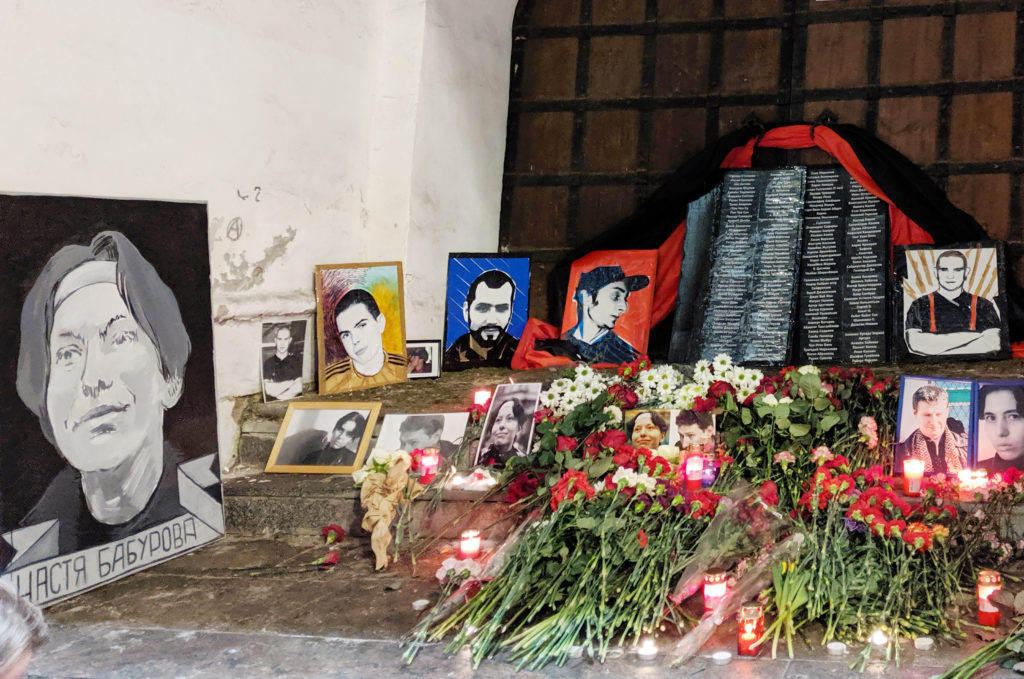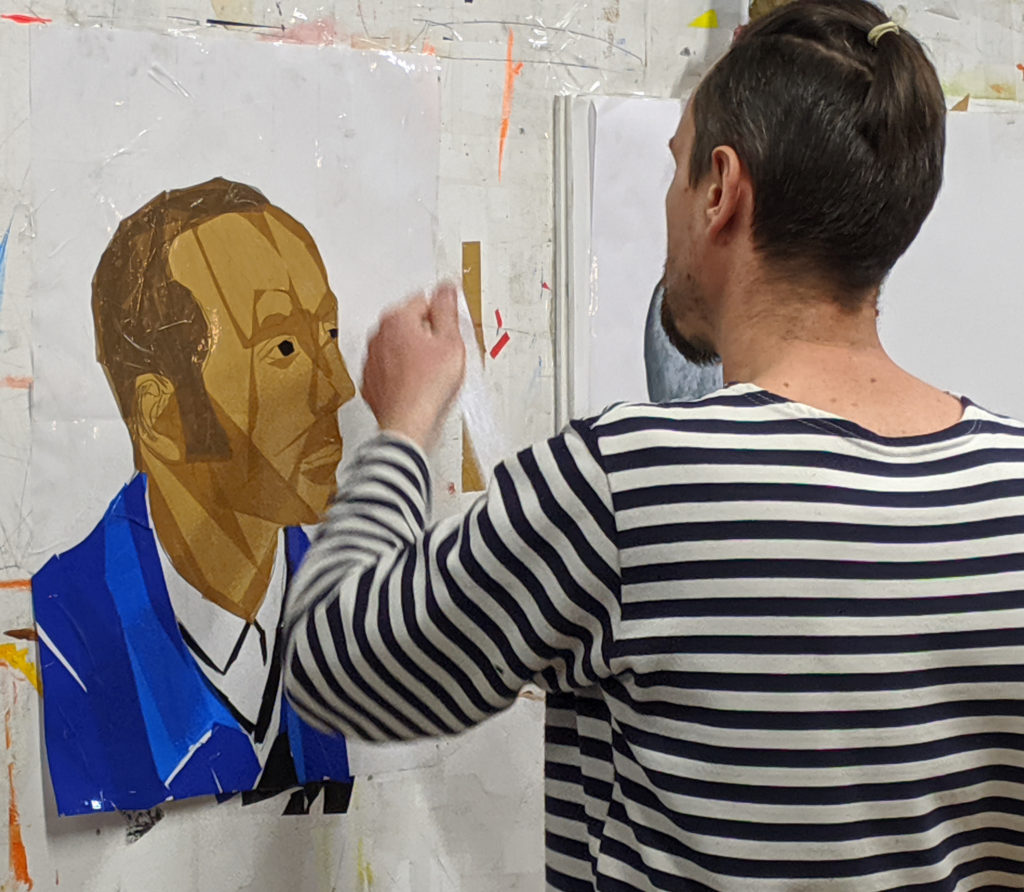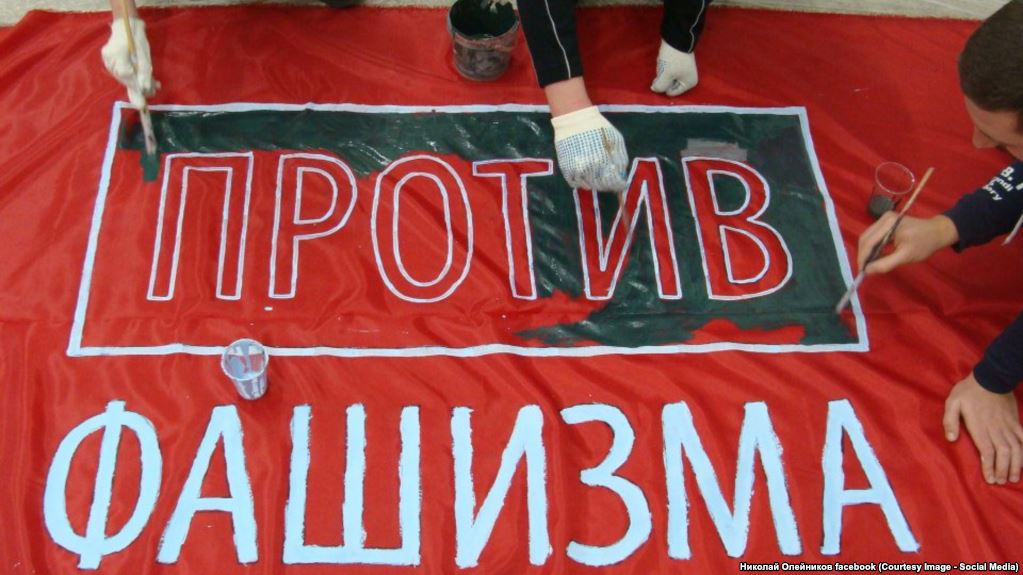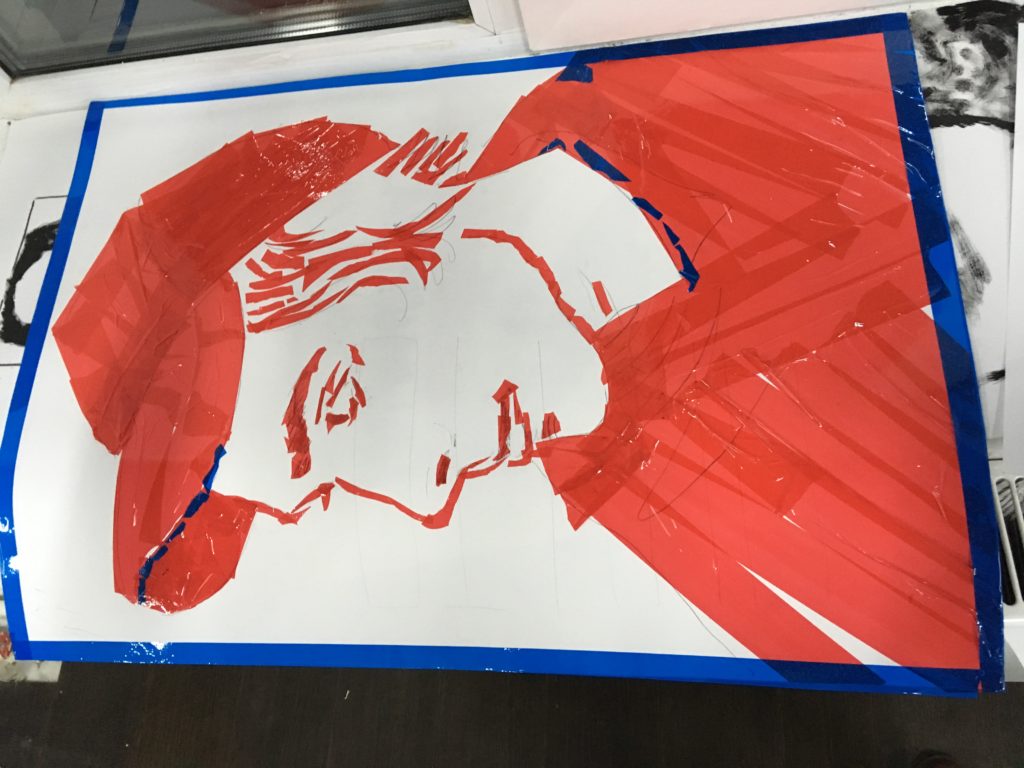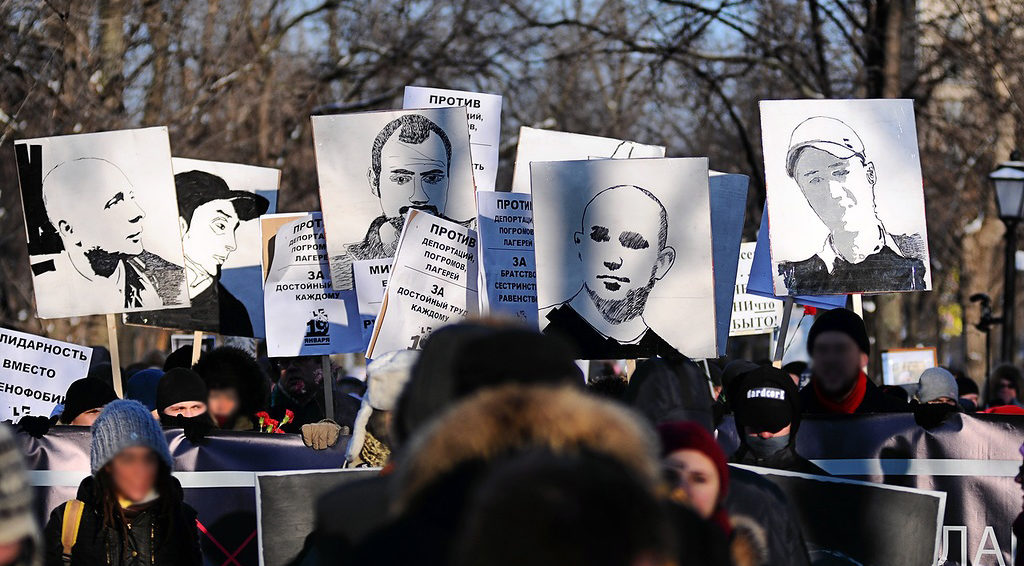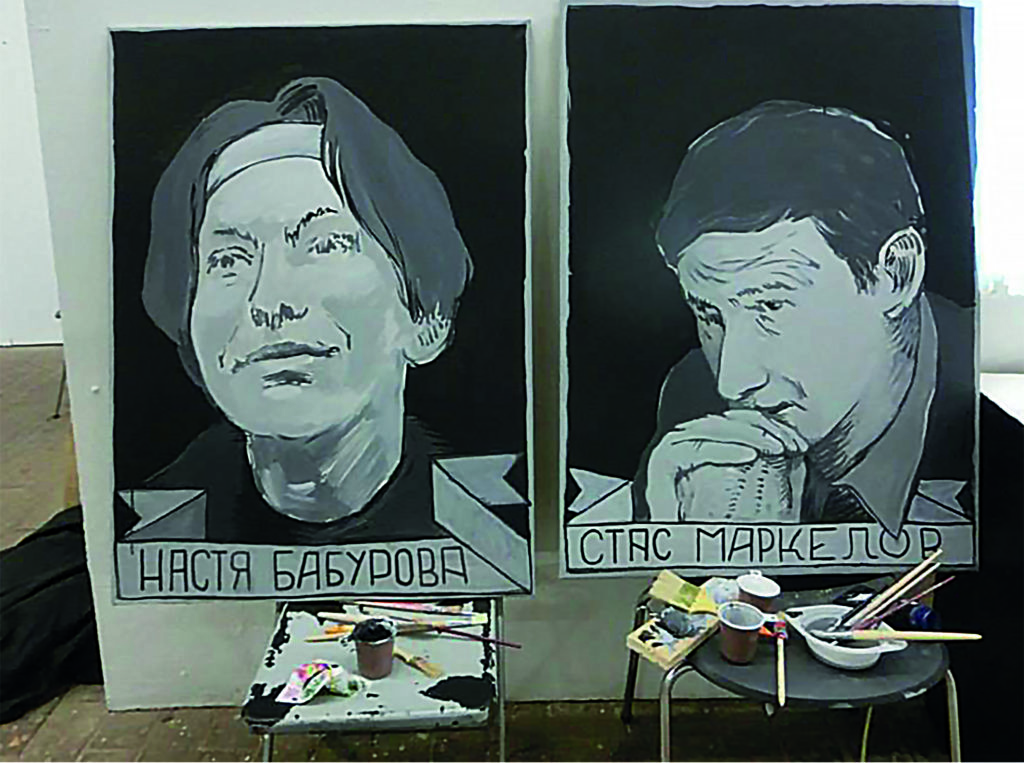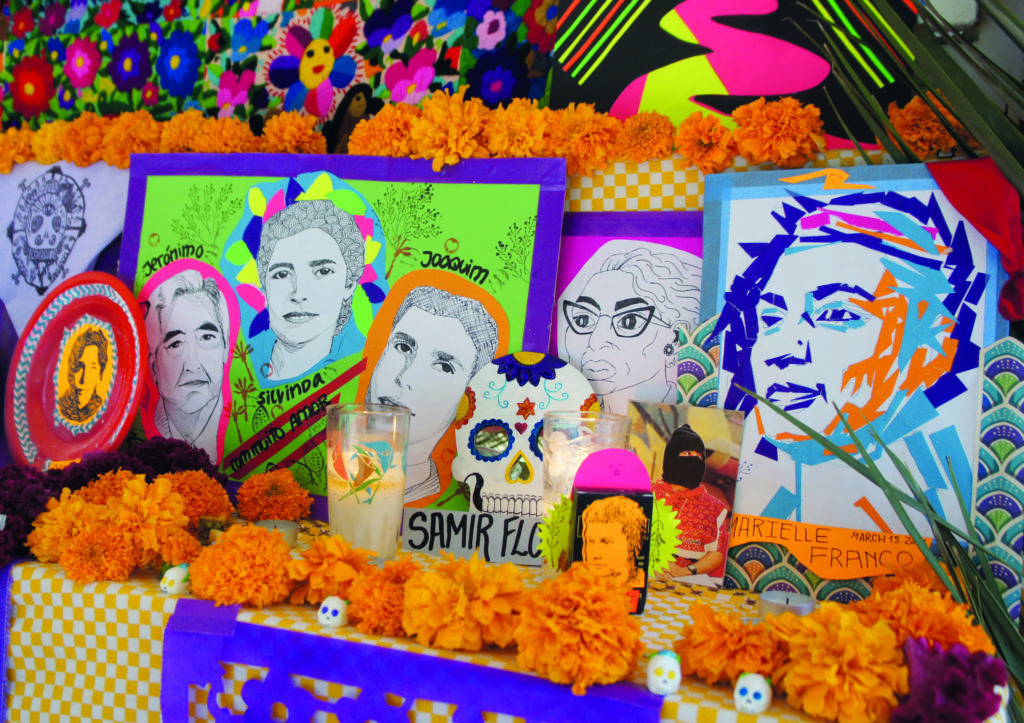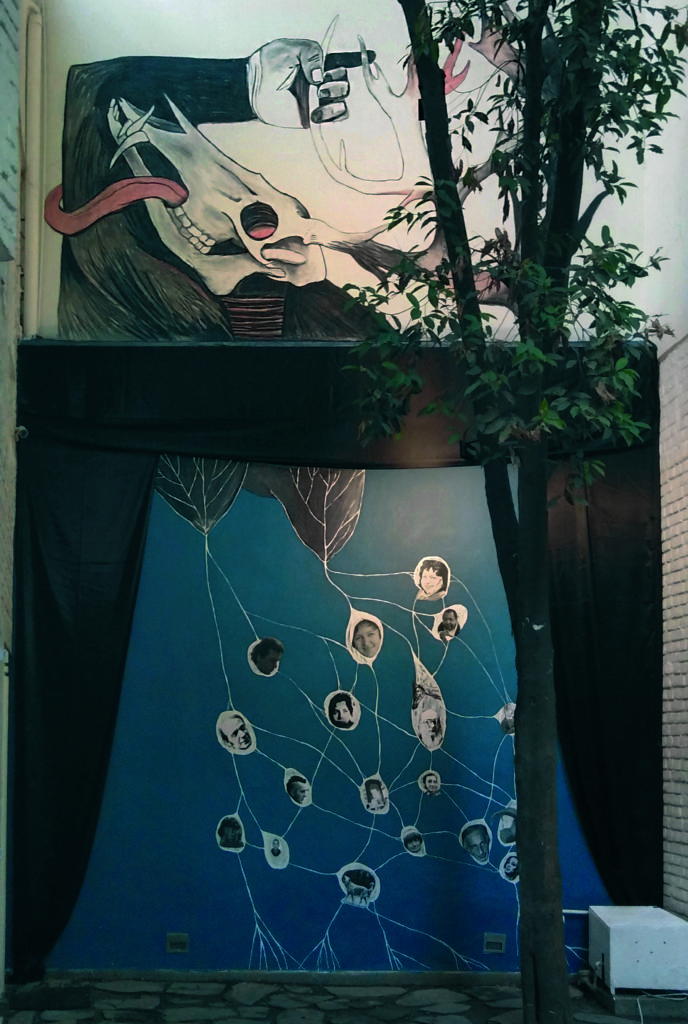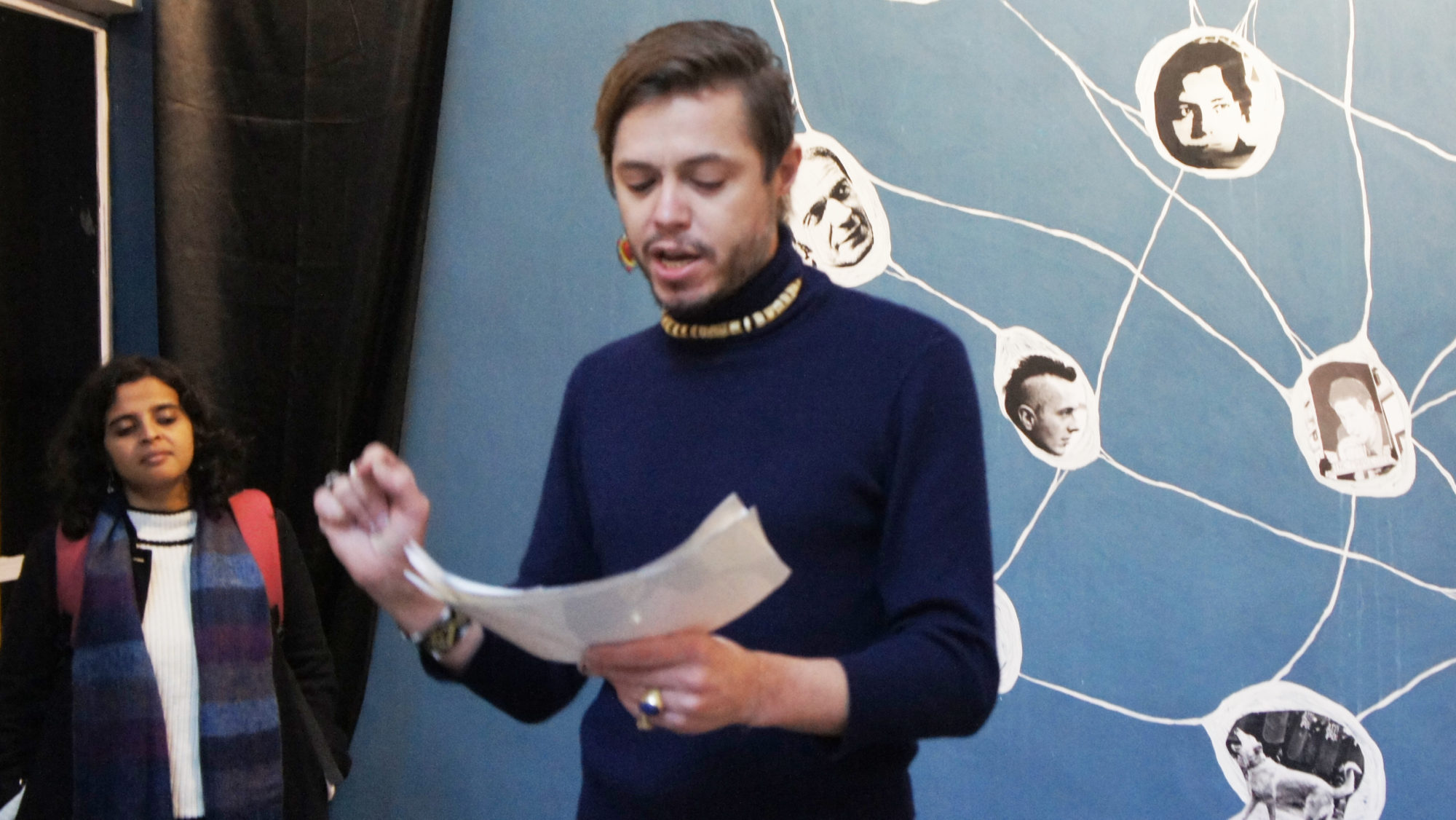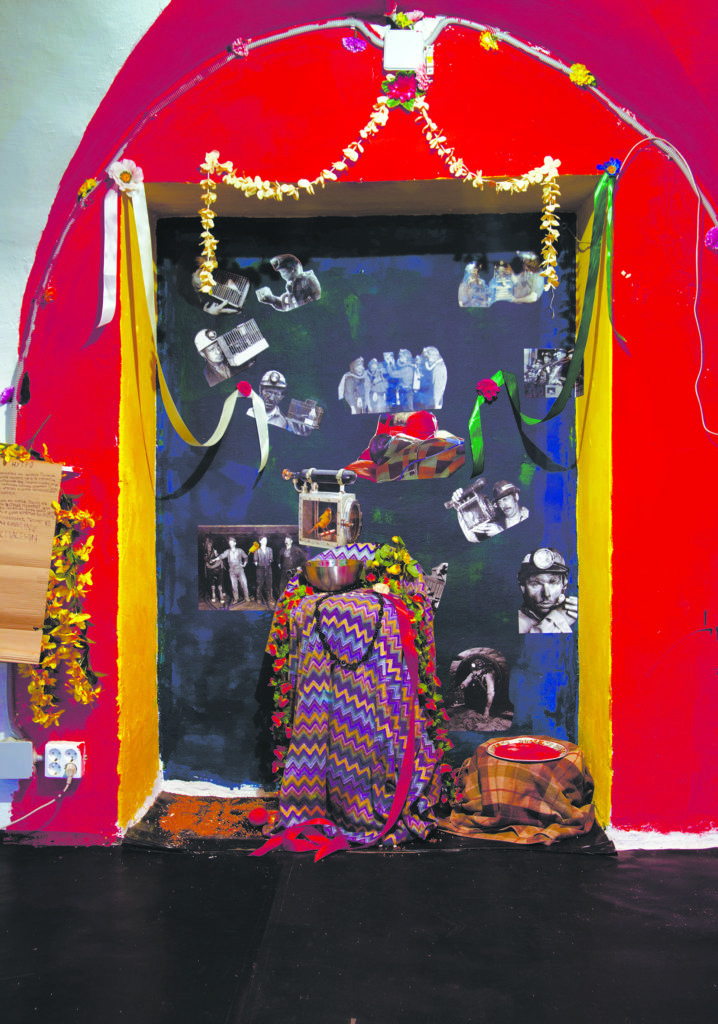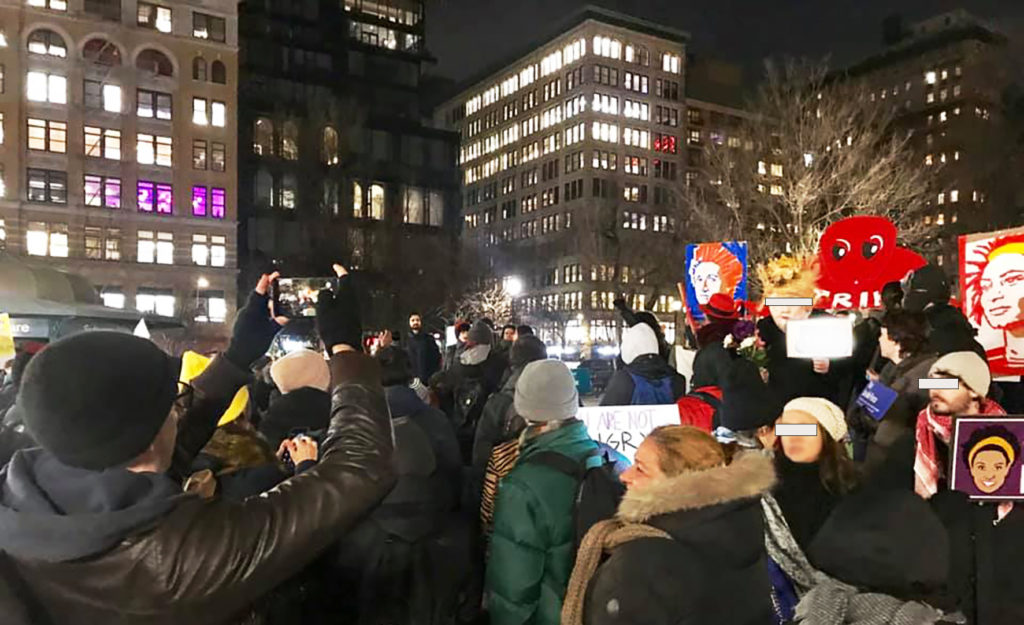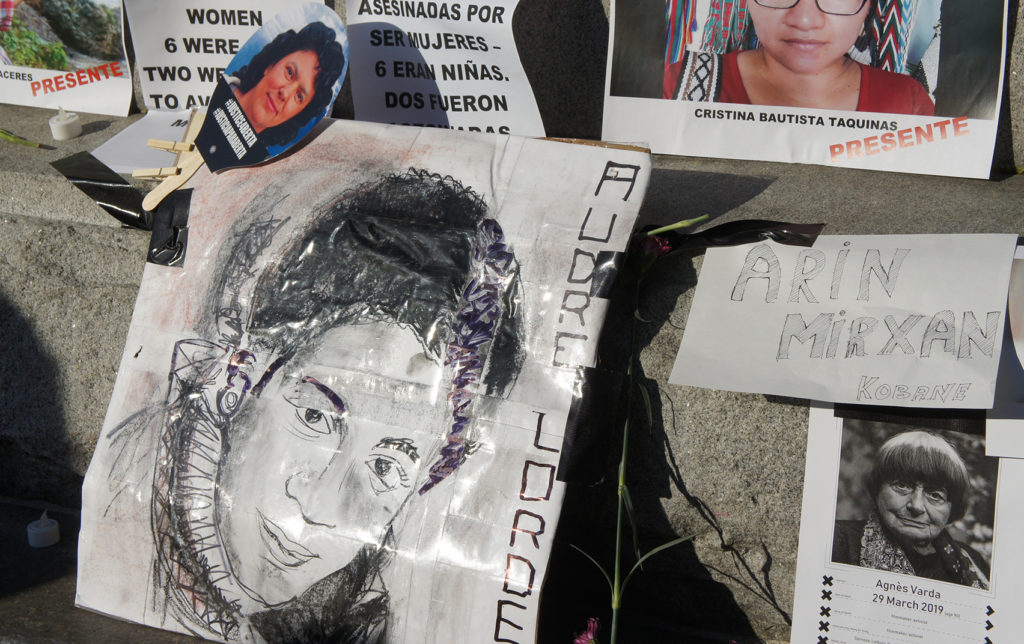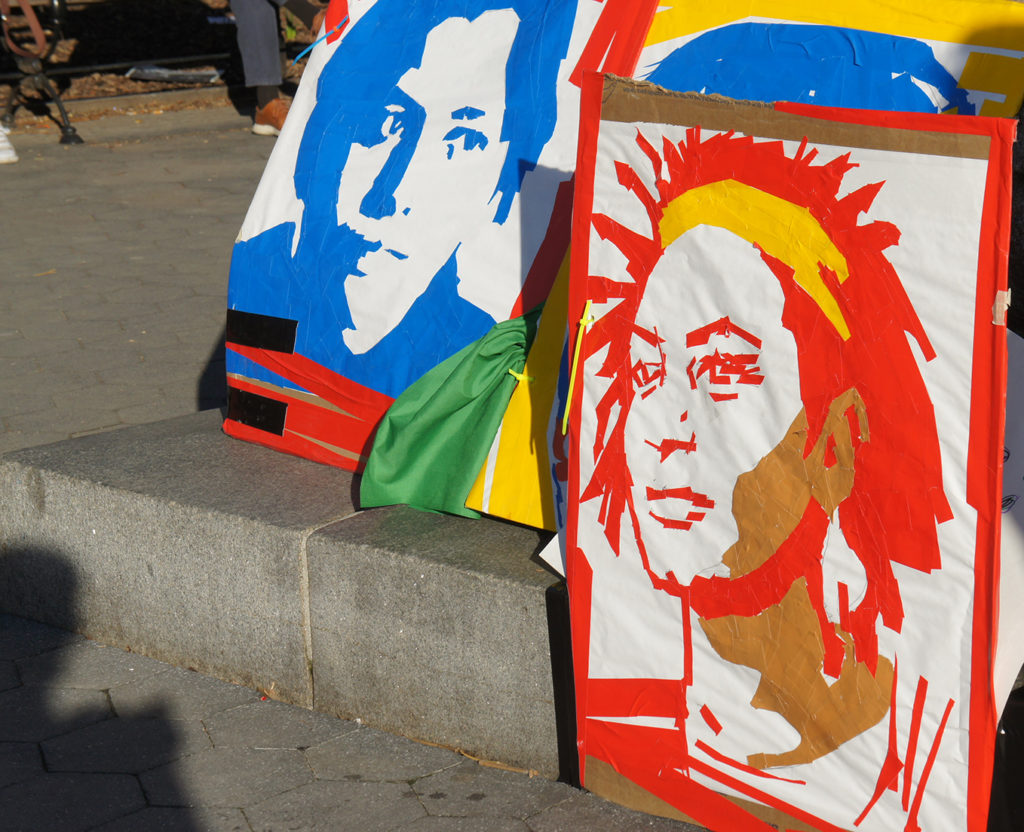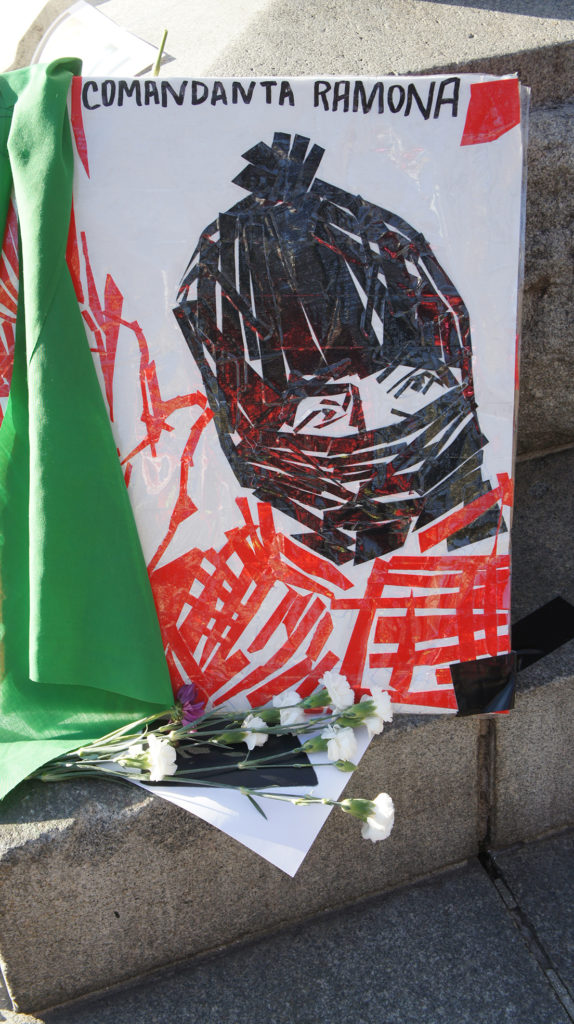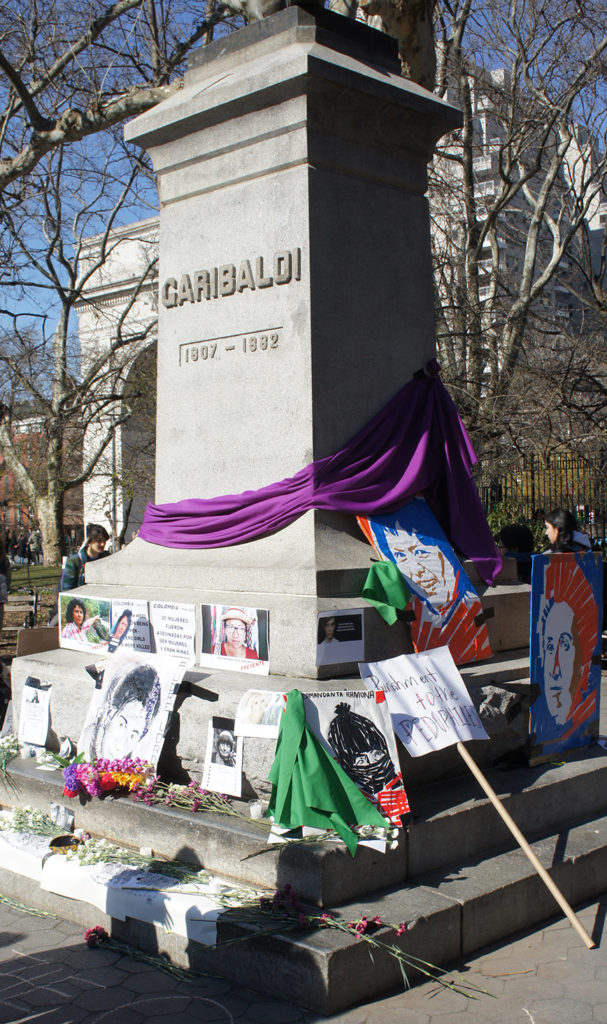To Re-Member to Not Forget
A Toolkit to Exercises Our Political Memory: Punk Altars, Radical Ancestors and Antifascist Spirituality
We’d like to thank Alessandra Pomarico for her precious revision of this text. Her editorial guidance made this writing possible in a moment when things became almost unspeakable.
***
All images and copyright belong to the author Nikolay Oleynikov and the collective Chto Delat unless specified.
One of the most dramatic losses I experienced as a teenager was not the fading of the gigantic country of my origin, the Soviet Union; instead, it was the demise of Viktor Tsoy, the leader of the band, Kino, a rock star, the last romantic of an epoch destined to disappear. In those turbulent times that were the late Soviet, he was the king of our thoughts and desires, and an entire generation was listening to his songs, celebrating doing nothing, hanging out, being cool and lonesome. His lyrics were light and ironic, and yet iron-serious, with that dark, English new wave fleur. He was also one of the few who pierced the heavy, and I mean lead-heavy, atmosphere of the civic silence during the Soviet invasion of Afghanistan.
He died in a car accident. He had just turned twenty-eight. I was what? Thirteen, fourteen? Overnight, spontaneous memorials—the Stena Tsoya [Tsoy’s Walls]—appeared in every city, all over the country. Each of these walls was a palimpsest mottled with quotes from his songs, naïve drawings, and posters. Candles burned day and night. Fresh carnations layering over the withered ones. Precious cassette tapes and cigarettes, “deficit” rouge lipsticks (at the time everything was scarce) were offered to the altars. Someone with a guitar was always there, and together we howled Tsoy’s songs. We were all mourning him.
Stena Tsoya was our refuge, and somehow became my punk university; here, I started to learn how to think, be, and act otherwise, and learned some basic guitar-playing tips, too. That was the first time I experienced the practice of collectively making an altar, and how potent these shared spaces are in creating a sense of community, a bond, a way to hold the memory alive, together.
January 19th Antifascist Memorial Workshops
where: Moscow and St. Petersburg
when: 2010 – current
participants included: the January 19 Committee, antifa activists, Haim Sokol, Elikuka, Kirill Medvedev, Olya Kurachova, Dima Green among many others artists and intellectuals who prefer to remain anonymous.
On January 19, 2009, two anti-fascists were assassinated by neo-Nazis in the center of Moscow. Stanislav “Stas” Markelov was a dedicated eco-activist, anarchist, and a very successful young lawyer who had won many important court cases defending so-called “street antifa” activists. Anastasia “Nastya” Baburova was an anarchist activist and a journalist for Novaya Gazeta. Both were shot and killed. Ever since, the art collective Chto Delat has participated in an annual antifascist memorial march dedicated to them. By hosting a workshop to make an altar-on-the-march, Chto Delat commemorate Stas and Nastya and other antifa militants killed on the streets in the early 2000s, as well as the migrants and workers that have been assaulted, the partisans of the Second World War, and all those who have perished fighting fascism.
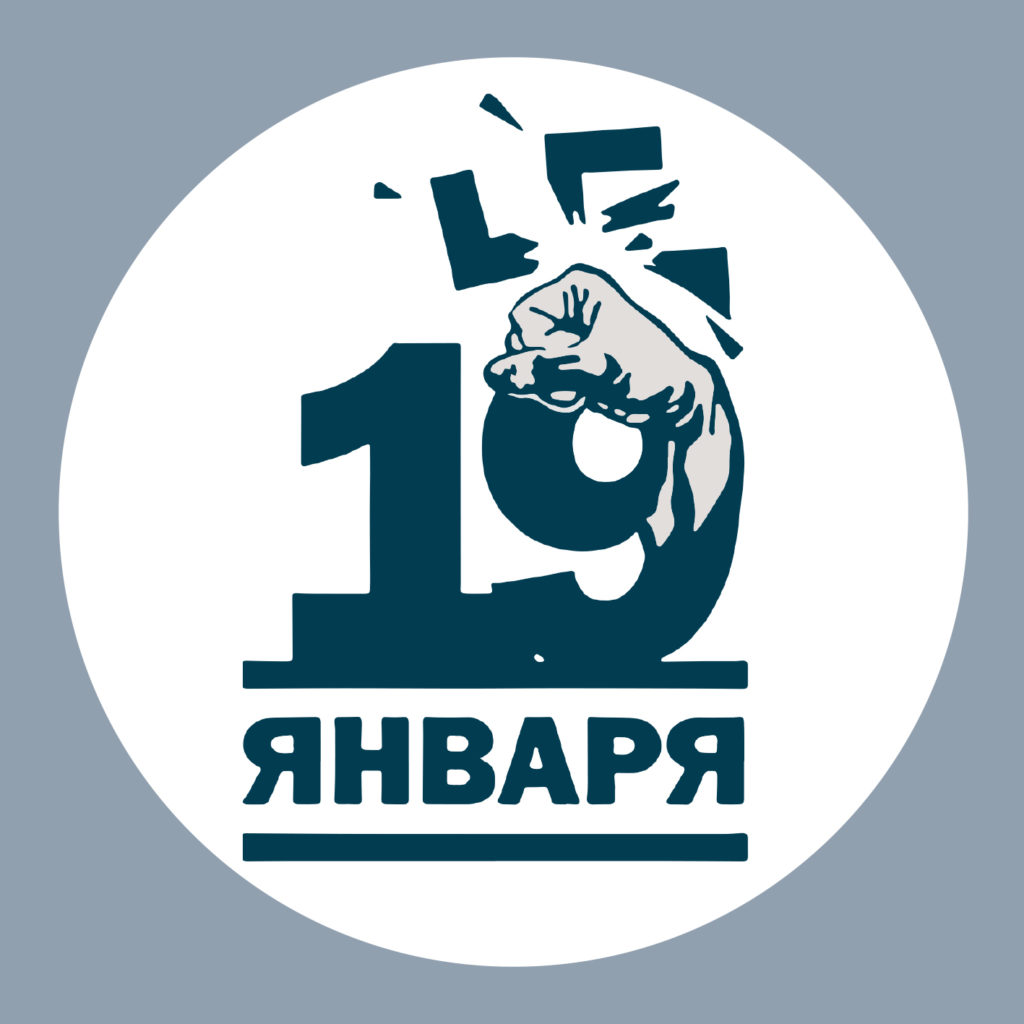
An emblem of the January 19 Committee
For Chto Delat the question of memory is central. In our work, which is based on collective processes, we often include (or we depart from) personal, intimate, and biographic memories, those that we embody and which populate our everyday life, as well as our collective, situated, historical memory. There is an exercise we often propose when we start to work with groups that invites precisely this tension between the personal and the political, which we call registration. It is a way to let our relationships to time and space, to the past, present, and future possibilities emerge. Nina Gasteva introduced the registration exercise while we were working on the film TheExcluded: In the Moment of Danger. The participants of this learning film were invited to register themselves in the moment of danger, according to their own time and space coordinates.
For example:
Ilya: I’m 2,000 kilometers from the battle for Donetsk Airport and twenty years away from the first war in Chechnya.
Anya: I’m 700 kilometers from the place of mass protests at Bolotnaya Square. I wasn’t there on May 6, 2012.
Tim: I’m ten fingernails on the map from the destroyed monument to Lenin in Zhytomyr, Central Ukraine. And forty-nine years after the first artificial satellite was launched from Earth. Following this practice, I am writing this text being one Russian warship distance away from the start of the war, and 4,5567 cables away from my children.
Altars to Our Teachers #1
where: Michoacan, Mexico
when: Day of the Dead (2019)
participants included: IV Ecoversities Planetary Gathering participants, convened with Daniela Brasil, Kate Morales, and Alessandra Pomarico.
The Ecoversities Alliance reunited in Michoacán, land of the Indigenous Purépecha people, controlled today by the drug cartels. Whilst participating in the tradition of Día de los Muertos, when people welcome back those who have passed, we proposed the building of a common altar. With many friends versed in the arts of opening portals, creating garlands of flowers, papel picado (paper craft), and preparing offerings, we called back our beloved and the teachers who paved the way for our radical pedagogies and those who fought to defend life. We shared stories, songs, poems, invocations, tears, and sentiments. We stood in silence, we danced, we embraced. We got to know and to mix with our ancestors: Paulo Freire, Berta Cáseres, Marielle Franco, Comandanta Ramona, Joe Strummer, Micha the cat, and Nonna Mimma, Nastya Baburova, Stas Markelov, and the forty-three students of the Rural Teachers College of Ayotzinapa, presente!
We are well aware of the ambivalence between commemoration and memorialization, the complex issues of documentation and representation. We resist monumentalizing, or historicizing memory; rather, it is a matter to discuss, question, reflect upon. In this sense, the practice of making altars collectively appeared more as an instrument to host spaces of remembrance, revocation, militant mourning, and reclamation. Secular yet sacred, these are spaces where our political and spiritual legacy can be named, re-membered, and passed on.
In Chto Delat, what we claim as our ancestral lineage was never directly or exclusively connected to our relationships with either bloodline, soil, or nationality; on the contrary, we consider our ancestors those who (in-)formed us, and thanks to whom we can all engage in a constant process of becoming ourselves. We often call for Rosa Luxemburg and Alexandra Kollontai; bell hooks and Audre Lorde and Langston Hughes; Brecht, Boal, and Freire. We share these teachers with many others, across different locations and contexts—they paved our path.
We also evoke as teachers those who fell victim to Nazism, femicide, state-violence: Carlo Giuliani, Nastya Baburova, the miners of Listvyazhnaya, the Communards who have been executed, those killed on Maidan in Ukraine, Marielle Franco, “Vanya Kostolom” Khutorskoy, Loukanikos the dog. They are our lighthouses, sending us those weak signals of hope; their light transcends time and space, overcoming the borders—linguistic or territorial—their lessons are sown into us. Their seeds have grown roots, becoming places of our radical belonging. They deliver strange flowers, bring hybrid fruits that taste bittersweet at times.
Altars to Our Teachers #2
where: Santiniketan, West Bengal — Under the Mango Tree, second international gathering
when: 2020
hosted by: Sepake Angiama, Tara Lasrado, and Sanchayan Ghosh
We reunited in the legendary Visva-Bharati University founded one century ago in Santiniketan by the great poet and pedagogue Rabindranath Tagore. The university was one of the most radical pedagogical experiments of the time, integrating arts, crafts, and humanities for students, regardless of caste. Our second Altar to Our Teacherswas built to honor those who have inspired, transformed, and influenced our pathways. Stories of different struggles were shared, and social structures were questioned—as were forms of state-led fascism against different religions and tribal communities in India and issues around enclosures and land appropriation, ecology, queerness, and feminism.
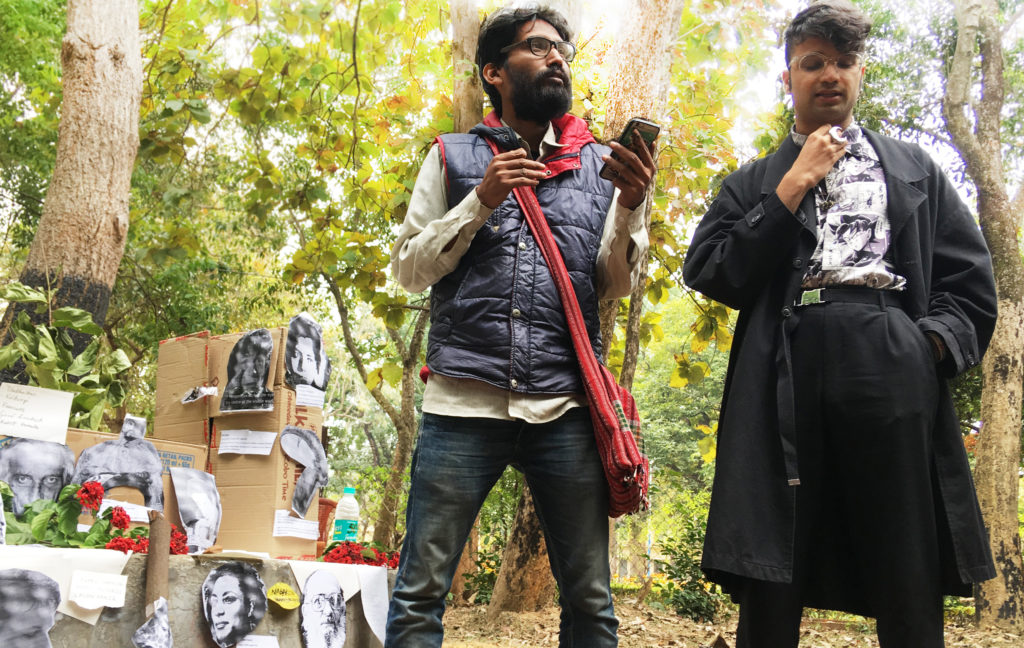
Bhaskar Hazarika recites the poem of Nabarun Bhattacharya. 
Taylor Cruz recites Soy Animal Triste, a poem by Angela Marìa Dàvila. 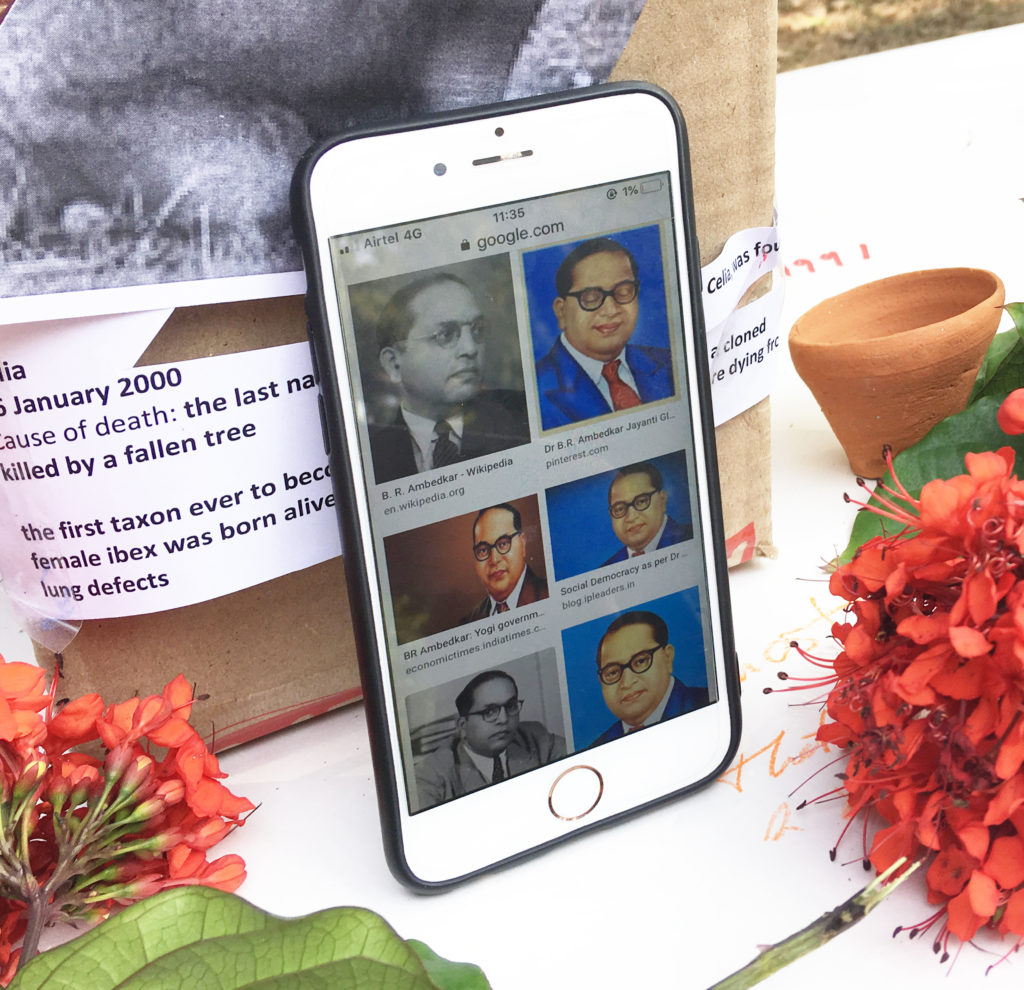
We saw some altars become monumental, while some monuments became altars. Some memories tend to vanish, some persist on our flesh, in our bones, and between our neurons; we know, some memories have been stolen, silenced, mis-interpreted, or misused: violated for the sake of serving the powers that be. Some are revolting and resurrecting, they find a place to become visible again, they are reclaimed, performed, transmitted.
Altars to Our Teachers #3
where: CAC, Glasgow (2019) – Kohj, New Delhi (2020)
participants: The visitors of “Times, Lines, 1989s”
Chto Delat included an altar in their solo show, “Times, Lines, 1989s,” inviting the audience to participate in it. A History Making Station i.e. a computer connected to a printing machine and Wi-Fi, was set up in the space, so people could add their own key figures or historical events into the porous structure of the exhibition. This is how Gilles Deleuze, the giraffe, Ivan Illich, and Tzaplya’s mother Zoya found their place in this ten-meter high, capsular-vascular tangle memorial.
Ceremony of activation of the Altar at Khoj. Nikolay Oleynikov invokes ancestors by calling the name of each of them, their desires [nadezhdy], their beliefs [vera], and their cause of death.
For a long time, with Chto Delat, we investigated monumentality and built temporary collective memorials or counter-monuments, some so vulnerable and fragile that they have been burnt down and disappeared in one night. Back in 2014, and so many times after our Queer Anti-fascist Soldier was set alight in Berlin (during Russia’s first invasion in Ukraine) we had to ask ourselves how to keep our anti-fascist memory alive and present.
Right now, Putin is employing his expression denazification—a neologism of his own invention—to justify the atrocities of the occupation of Ukraine. Will it ever be possible to reclaim our political memory, to speak out about our anti-fascism, to un-foul it from layers of gross lies, outrageous crimes, and horrors? What does it mean to remember and not to forget?
In Russia, we have witnessed how the state have appropriated the history of the victory against Nazi-fascism, manipulating people’s individual memories, appropriating the anti-fascist rhetoric in a revisionist way, to justify, for example, the annexation of Crimea eight years ago. We are witnessing now, history casting a much heavier weight, something that we saw coming but could not be well enough prepared for to face and confront. How do we remember an event that is rendered unnamable by official narratives, and unspeakable by a collective wound?
Altars to Miners and Canaries
where: ETOZDES and Rosa House of Culture, St. Petersburg
when: December, 2021
with: the School of Engaged Art, St-Petersburg and the students of Ecole Supérieure d’Art et Design of St-Etienne; led by Ernesto Oroza
Testimonies of the Canary is a large-scale collective wall-painting that was created after a year-long artistic research project on Dangers and Catastrophes—and those sensitive beings who send us signals of alert. We were inspired by the phenomena of the “canary testimony.”The canary is a sentinel bird with a fast metabolism; when exposed to high methane levels in a coal mine, it dies, signaling the miners to immediately evacuate. As we were working together on November 25, 2021, we heard of an explosion at the Listvyazhnaya mine in Russia, which killed fifty-one people. Following this event, we embedded as part of the mural an altar dedicated to all miners and canaries fallen at work. The altar was also activated with the Danger Choir performance and a night-long rave vigil.
Celebrating the memory of our dead, re-signifying the public space through assembling our bodies, voices, memories, and songs, or collecting items to insert inside a time capsule to send to future generations (hoping they will not repeat the same mistakes)—these are ways for Chto Delat to resist or, in other words, to ensure our survivance. Developing a participatory method of making altars and counter-monuments, we have been trying to activate a politics of space—of encounters, of collaborative interactions—to share our experiences and desires, to strengthen a sense of belonging. Some of these altars were built outside, in public space, in emblematic sites of struggles, or in places where people commonly gather; at other times the altars appeared inside, in art spaces, attempting to resignify these sites.
Altar to Antifa of All Times and Cultures
where: Schwarzenberg Platz, Vienna
when: May – June, 2014
participants included: Into the City festival (curated by Birgit Lurz and Wolfgang Schlag) and inhabitants of Vienna
Chto Delat’s project Face to Face with Monument revolved around the politics of commemoration, with the aim of transforming fixed monumental structures into more ephemeral, performative, and participatory practices of remembrance. Part of our temporary monument was dedicated to the commemoration of anti-fascist fighters of all times and cultures. Neighbors and visitors were also invited to express their own understanding of today’s anti-fascist struggle. Yugoslav Partisanki (Partisans) of the Second World War, Patrice Lumumba, John Hearfield, Bear Jew, and Gramsci were resurrected shoulder to shoulder.
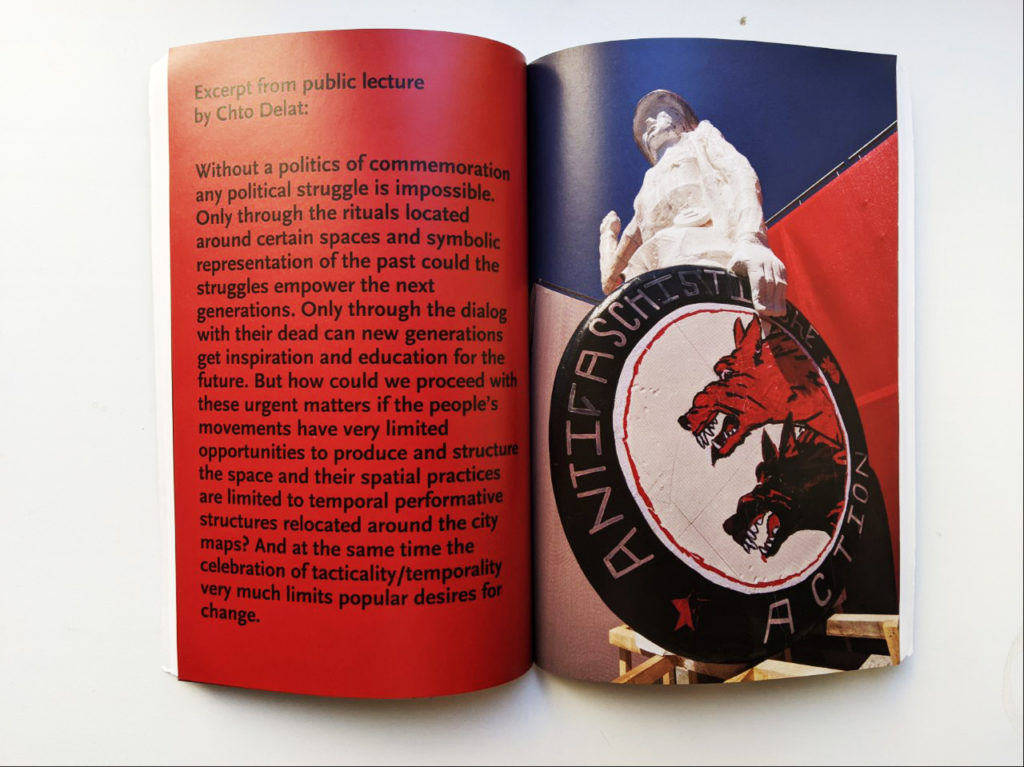
Chto Delat: To Remember Means to Struggle. Acknowledgements […]
in Rethinking Marxism, Vol. 28, Number 2, April 2016
We are interested in the speculative potential and the possibility of political awareness these practices might bring, and we often associate them with storytelling, place building, and filmmaking. In this way, the practice of commemoration (literally, bringing our memories together) becomes a pedagogy and the place becomes a site of learning. We make our shrines collectively, we erect our own memorials or counter-monuments, we activate them using our own reinvented feminist, anti-fascist ceremonies and offerings, we organize punk-concerts, debates, readings, raves, performances, actions, meetings of grassroots activists, or silent wakes. Our altars reappropriate monumentality via a more intimate, vernacular, and affective mode.
Altar of our Sheroes
where: Union Square Park, Washington Square Park, The 8th Floor and New York University, and elsewhere
when: 2018 – ongoing
participants: International Feminist Strike 8-M, New York City with migrant and undocumented women, sex workers and women’s trade unions; grass-roots organizations such as the Workers Art Coalition and Tools & Tiaras Inc.; and artist-activists such as Barry Cline, Danilo Correale, Nina Cossin, Shadi Harouni, Talia Molé, Olga Kopenkina, Ayreen Anastas & Rene Gabri, Alessandra Pomarico, Greg Sholette, and Athena Soules, among others.
In 2018, in preparation for the annual International Feminist Strike on March 8 (8-M), a series of workshops were organized that mixed political prop-making technology with our altar-making practice. The portraits of murdered and disappeared women—of poets, intellectuals, undocumented workers, mothers, feminists, and freedom fighters—were displayed in public space with slogans, banners, flowers, incense, and candles. It became a tradition, and every year for the 8-M strike as well as on the International Day for the Elimination of Violence against Women (November 25), these portraits come out on to the street during vigils, festivals, and rallies.
Indeed, for us, art (as practice and space) has to be where our living memory is present—therefore, inhabiting the streets, our homes, our schools. Bringing back those who have fought before us, our teachers and elders (no matter how young they were when they died), helps us to provide and maintain spaces for coming together, to mourn, to never forget, to name, to re-member; to search for where we come from, in the hope that it will give us the strength to keep going.
To Remember Means to Fight
Never
Forgive, Never Forget
[1] Chto Delat (realized in collaboration with graduates of the Chto Delat School of Engaged Art), The Excluded: In the Moment of Danger, directed by Olga “Tsaplya” Egorova, choreographed by Nina Gasteva, 2014.
[2] On February 24, 2022, the Russian flagship missile cruiser, Moskva, began its assault on Snake Island, Ukraine, an island located in the Black Sea. During the onslaught, the Moskva called on the soldiers to surrender. The exchange has been translated as follows:
Russian warship: “Snake Island, I, Russian warship, repeat the offer: put down your arms and surrender, or you will be bombed. Have you understood me? Do you copy?”
Ukrainian 1: “That’s it, then. Or, do we need to fuck them back off?”
Ukrainian 2: “Might as well.”
Ukrainian 1: “Russian warship, go fuck yourself.”
[3] One cable (international) = 0.1852 km / 0.1 nautical mile.
[4] Chto Delat, It’s Getting Darker: Lighthouse—Memorials to the Weak Lights of Hope, mixed-media, various dimensions, 2015–21. The installation followed and includes the film by Chto Delat, It Hasn’t Happened to Us Yet: Safe Haven, directed by Olga “Tsaplya” Egorova, choreographed by Nina Gasteva, 2016.
[5] Scroll down for Chto Delat, Altar to Antifa of All Times and Cultures, 2014.
